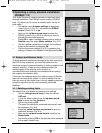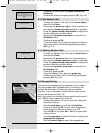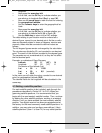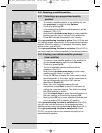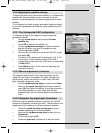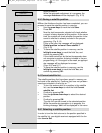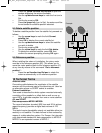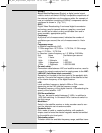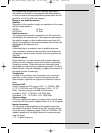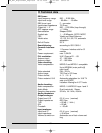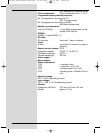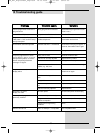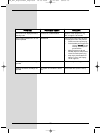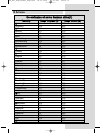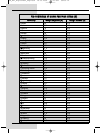
mit neighbouring programmes with opposite polarisation
(horizontal and vertical or laevorotatory and dextrorotatory).
In order to receive the two polarisation planes either two sin-
gle LNCs or one V/H LNC are required.
Receiver: see satellite receiver
Satellite:
Description of the satellite, usually a combination of the name
with the orbital position,
ASTRA 19° East
EUTELSAT 13° East
Satellite receiver:
The signals received and converted by the LNC cannot be
processed by the television set. The signals are processed in
the satellite receiver so that modified audio and video (AV)
signals are available at the receiver outputs that can then be
processed by the television set.
SCART:
A standard plug-in connection used in satellite receivers,
video recorders, television sets and other home electronics
equipment to transmit audio (sound) and video (picture) sig-
nals (AV).
Software update:
Digital television is a new medium that provides improved
picture and sound quality as well as the option of providing
interactive services. These services are continually being
developed and improved by programme providers. To utilise
these services it may be necessary to update the software of
the digital receiver occasionally.
Transponder:
Located on the satellite, used to process one or more pro-
grammes. In other words, it receives the signal from the
ground station, amplifies the signal and transmits it back to
earth.
Universal LNC:
Used to receive the FFS range (10,70 - 11,70 GHz), BBS
(11,70 - 12,50 GHz) and FFS High Band (12,50 - 12,75
GHz). This entire range is divided into two bands:
Low Band: 10,70 - 11,80 GHz; LOF 9750 MHz
High Band 11,70 - 12,75 GHz ; LOF 10600 MHz
Service voltage:
LNCs are supplied with power by means of the coaxial cable,
to achieve this the receiver supples either 14 or 18 volt power
Interim frequency:
The frequency range broadcast by the satellite cannot be
transmitted via a cable. Therefore the LNC converts the sig-
nal to the interim frequency range of 950 to 2150 MHz. This
makes it possible for the digital receiver to receive and pro-
cess the signal.
1. IF = Interim frequency
65
Bed_Anl_Digicorder_englisch 18.03.2004 14:10 Uhr Seite 65



